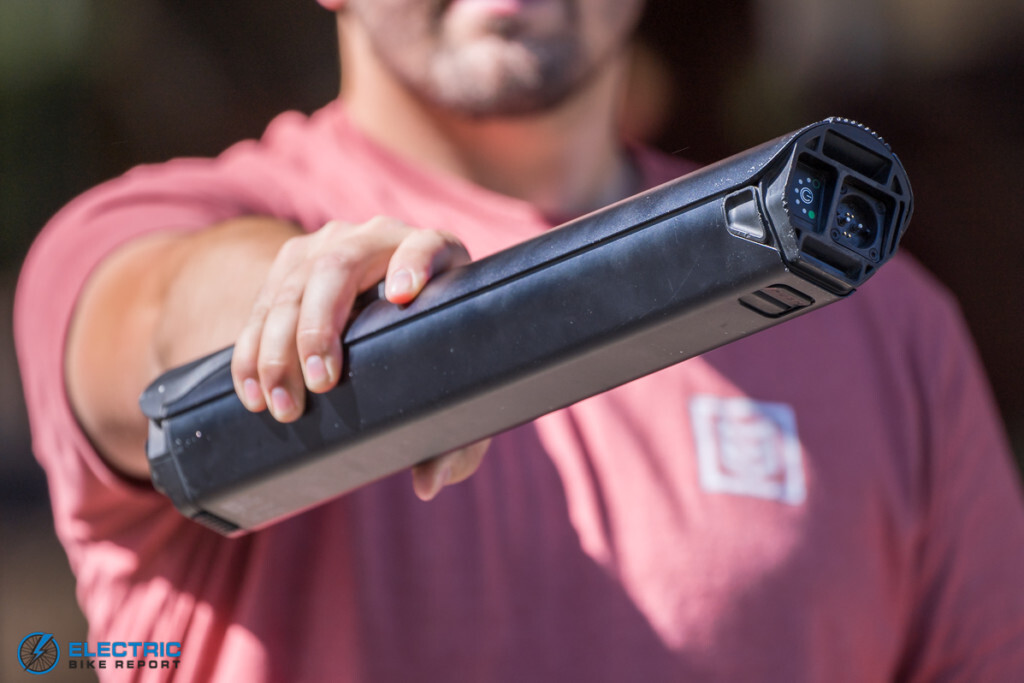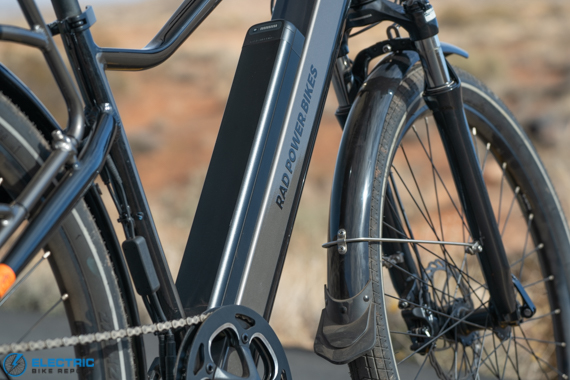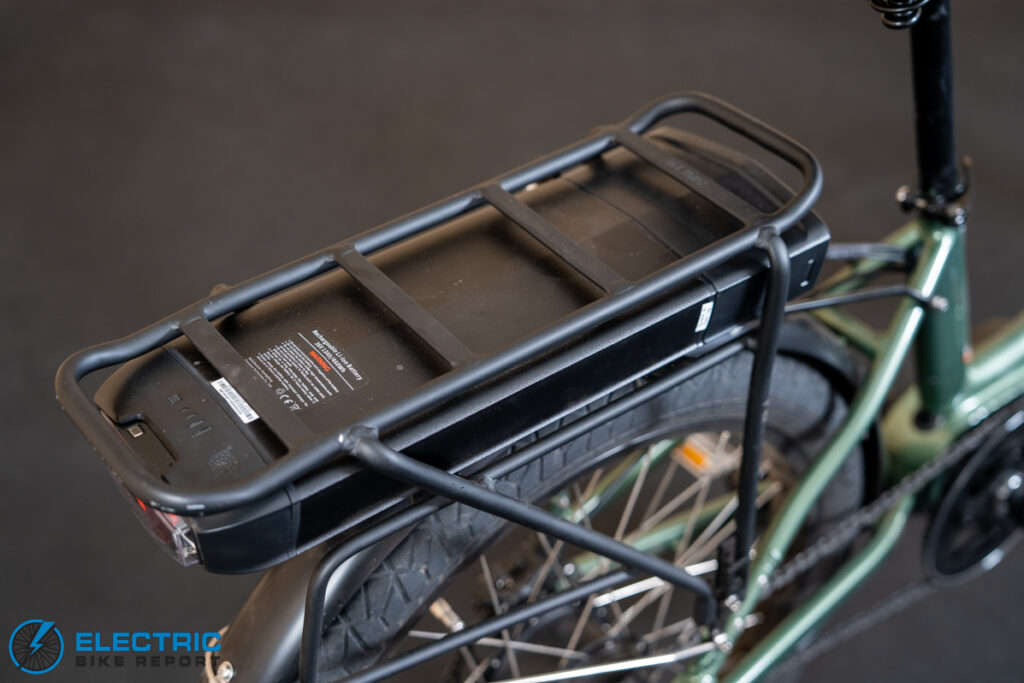Guide, Battery Care & Charging
Understanding Electric Bike Battery Basic: The Explanation of Volts, Amps, and Watt Hours
Some links in this article may be affiliate links. If you make a purchase or take action after clicking on one of these links, we may receive compensation.
Understanding Volts, Amps, and Watt-Hours: How Battery Specifications and Capacity Affect Performance and Cost
Comprehending e-bike batteries can be a challenge, even for those with knowledge in the field. Elaborating on the intricate details requires the expertise of electrical engineers who have undergone extensive education and gained years of experience. The reason behind this complexity is the incorporation of chemistry and mathematics into the realm of electric bikes.

When delving into the world of e-bikes or exploring electric bike battery specifications, you will encounter numerous terms such as battery size, capacity, voltage, amp hours, and watt hours. While some of these terms may be used interchangeably, others have distinct meanings. Navigating through this terminology can be perplexing, yet it is crucial for understanding electric bikes and their capabilities, especially when assessing their range before the need for recharging arises.
In this comprehensive guide to e-bike batteries, the knowledgeable writers at Electric Bike Report will elucidate the significance of common battery terms and how they impact the performance of the electric bikes they power.
Deciphering E-Bike Batteries
Batteries serve as a fundamental component of electric bikes, as they provide power to the motor. This, in turn, assists the rider and reduces the physical effort required to propel the bike forward.
E-bike batteries come in various sizes and can be mounted onto the frame in different ways. Some are completely internal, residing within the bike’s frame and unable to be removed without specialized tools and techniques utilized by professional technicians. Meanwhile, others are designed for easy removal, whether they are mounted externally, partially recessed within the frame, or completely concealed within the frame, rendering them virtually invisible.
Irrespective of their specific design, all e-bike batteries consist of battery packs composed of multiple cells, similar to the standard AA or AAA batteries used in everyday devices. The number and arrangement of these cells determine the rate at which power can be delivered and how long it can be sustained.
Unlike standard AA or AAA batteries, e-bike batteries primarily utilize rechargeable lithium-ion batteries, similar to those found in smartphones and cordless power tools. These lithium-ion batteries are highly efficient and can be recharged hundreds or even thousands of times with proper care. The Light Electric Vehicle Association (LEVA) provides a valuable article on battery care and safety to ensure optimal lifespan.
Terms and Definitions for Electric Bike Batteries
Fully integrated batteries, such as the one found on the Velotric Nomad 1, have the incredible ability to perfectly match the color of the bike and seamlessly blend into its frame. They become one with the bike, creating a sleek and unified appearance.
Examples of E-Bike Battery Specifications
Before we delve deeper into the intricacies, let’s take a look at a couple of examples that demonstrate how e-bike battery specifications are typically presented.
- V = Volts and Ah = Amp-hours
These symbols represent two fundamental measurements. The first value, volts (V), indicates the electrical energy available for the battery to deliver. The second value, amp-hours (Ah), denotes the battery’s capacity or the amount of power it can store. - V = Volts and Wh = Watt-hours
Similarly, volts (V) is the measurement of electrical force or pressure exerted by the battery, while watt-hours (Wh) indicate the battery’s capacity in terms of energy.

Now, let’s delve into a clear definition of these terms and some additional concepts that will assist us in understanding e-bike batteries more comprehensively.
Current
Current refers to the flow of electricity or the transfer of electrons through a circuit. It is the movement of electrical charge.
Circuit
A circuit represents a closed system consisting of wires and electrical components that allow current to travel and complete a path.
Volts (V)
Volts measure the amount of electrical force or pressure produced by the battery. It signifies the speed at which the battery’s current is outputted. This term is sometimes referred to as electromotive force (EMF), specifically highlighting the velocity at which electrons move within the system.
It’s important to note that voltage is a nominal rating used for classification purposes. In reality, a battery’s voltage varies based on factors such as the power being drawn from it and the battery’s charge level. As current is drawn from the battery, its voltage gradually decreases, illustrating this phenomenon in an e-bike battery voltage chart. The voltage is determined by the arrangement of battery cells connected “in series.”
Amps or Amperes (A)
Amps or amperes measure the strength of the battery’s output or current. It quantifies the volume of electrons passing through the system. The size of the wires within the system limits this current. Larger wires allow more current, while smaller wires restrict it. Generally, systems with higher voltage should incorporate smaller wires to prevent overheating, as smaller wires limit the amperage.
Amps can also be understood as the amount of energy drawn from the battery by the device it powers. This value can fluctuate depending on the specific moment or circumstances. For example, in the case of e-bike batteries and their motors, the amps drawn increase as the motor performs more demanding tasks, such as ascending steep inclines or solely relying on throttle control.
Amp-hours (Ah)
Amp-hours (Ah) represent a measurement of charge, reflecting the amount of energy an electrical system can deliver over the course of an hour.
Consider a 10 Ah battery; it has the capability to deliver 10 amps of power continuously for a single hour. Alternatively, it can provide 1 amp of power for a span of 10 hours, depending on the power requirements of the component being supplied the current.
Amp-hours: A Reliable Indicator of Battery Capacity
Amp-hours are a crucial measurement that determines the capacity of a battery. The number of clusters of battery cells arranged “in parallel” directly affects the amp-hours. It serves as a unit of power, equivalent to the amount of work that can be accomplished by one amp of current delivered at 1 volt. The rate at which energy is utilized determines the amount of work. Although this measurement is typically applied to an e-bike’s motor, the battery must also support the motor’s requirements.
Watt-hours: A Precise Measurement of Capacity
Watt-hours is another pivotal measurement that signifies the capacity of a battery. It represents the amount of work that can be achieved or the power expended over the duration of an hour. This is directly influenced by multiplying a battery’s voltage by its amp-hours. For instance, a 24V, 20 Ah battery and a 48V, 10 Ah battery may appear dissimilar, but they possess a similar amount of energy. Thus, watt-hours prove to be a more dependable indicator when comparing different batteries.
The Role of the Controller
The controller serves as a vital component that regulates the flow of electricity within a circuit. It prevents the battery from discharging all its energy simultaneously. In an electric bike, the controller acts as the “brain.” It adjusts the pedal assist system, controls the level of contribution from the motor, and determines the e-bike’s speed.
The Electricity-As-Water Concept
All the aforementioned terms describe the strength and total energy present in a system. However, comprehending these concepts can be challenging when attempting to relate them to everyday life. Therefore, electrical concepts are often compared to plumbing and the flow of water.

If we envision a large container filled with water, the container symbolizes the battery itself, while the water inside represents the current or electrical charge. Similar to how the container has a limited capacity to hold water, a battery also has its own capacity.
Imagine connecting the container to a pipe or hose; in that case, the tube represents the electrical system’s wiring. Voltage can be likened to the pressure that propels water through the tube. Amps, on the other hand, symbolize the volume or amount of water flowing through the system. This flow can be influenced by factors such as the diameter of the pipe and the faucet’s openness.
If we fully open the faucet, allowing the water to flow through the connected tube and into a bucket, the amount of water accumulated in the bucket after an hour can be compared to an amp-hour.
However, if we utilize the water to turn a small water wheel, a watt is the distance that one unit (amp) of water can rotate the wheel. The combined elements allow us to determine the wheel’s distance turned by a full container of water (watt-hours). By regulating the flow of water through the faucet, we can also estimate the duration it takes for the container to empty completely.
The Relevance of Understanding these Concepts
In the realm of e-bikes, understanding the aforementioned terms significantly impacts their performance. These terms determine how quickly they can accelerate, their cost, and most importantly, their range and endurance. Additionally, these factors also influence an e-bike’s ability to power uphill with confidence and the extent to which its motor can provide input.
E-Bike Battery Voltage Determines Speed and Acceleration
Most e-bikes are equipped with batteries that have either a voltage of 36V or 48V, although there are options available with lower or higher voltages. However, lower-voltage batteries usually cannot provide the desired level of power for most users, and it is important to note that anything above 48V carries a potential safety risk from electrical shocks. While 52V systems exist, they are less common, but they do have an advantage over 48V systems in terms of delivering a more consistent level of power over extended periods of time.
When we compare the various battery voltages to a plumbing analogy, a 48V system can be likened to having greater “water pressure” compared to a 36V system. In practical terms, this means that an e-bike’s motor will receive power more quickly from a 48V battery as compared to a 36V system.
Therefore, a motor connected to a 48V system does not have to wait for power access and can accelerate faster, ultimately reaching higher speeds compared to a motor fueled by a lower-voltage battery, assuming all other factors remain constant.
The Rad Power Bikes’ RadCity 5 Plus utilizes a semi-integrated battery that prioritizes easy separation from the frame rather than visibility.

E-Bike Battery Capacity Determines Range
While an electric bike’s range can be influenced by multiple factors, the capacity of its battery is a crucial determinant and serves as a reliable indicator of potential distance. It’s important to understand the distinction between amp-hours and watt-hours when measuring an e-bike’s battery capacity.
If we draw a parallel between e-bike battery specifications and cars, amp-hours can be compared to the capacity of the gas tank. A larger number of amp-hours signifies a larger “fuel” capacity, while a higher watt-hour rating allows an e-bike to travel a greater distance or maintain faster speeds over shorter distances. Considering the relationship between volts, amp-hours, and watt-hours, if two batteries possess the same amp-hour rating but different voltages, the battery with the higher voltage will have more watt-hours. This is why watt-hours are generally regarded as the most useful specification for consumers.
However, the range equation becomes more complex when taking into account the interaction between an e-bike’s battery and its motor. Factors such as the motor’s voltage, type, specifications, and efficiency all contribute to the overall range.
Aside from the watt-hour rating of the battery, the following factors (among others) impact e-bike range:
- Motor voltage and watt output
- Rider and cargo weight
- Weather conditions and wind
- Speed (including the PAS setting)
- Terrain (including road surfaces and inclines)
- Number of stops and starts
Factors Affecting E-Bike Battery Range
- Amount and proper timing of rider input (pedaling)
- Tire size and tread type
The more extreme any of these factors are, the less range an e-bike battery will be able to provide, because the motor will need to do more work to compensate. Consequently, it will draw more energy from the battery to make up for it, thus reducing the remaining pool of available charge.
E-Bike Battery Size and Cost
Generally speaking, an e-bike’s battery is the most expensive component. Once again, considering that batteries are composed of clusters of individual cells, a greater number of cells equals a greater number of amp-hours and watt-hours, but it also results in increased cost.
Therefore, it is crucial to consider a practical range that caters to your own personal needs. This ensures that you do not spend excessive money on a large battery that you do not actually require. While an extended range may seem impressive on paper, it might greatly exceed the distance you typically travel.
The Evelo Galaxy SL and Galaxy Lux feature unobtrusively mounted external batteries beneath the cargo rack, which also include integrated tail and brake lights.
E-Bike Battery Amp-hours and Motor Input
An e-bike’s battery voltage and watt-hours must align with the requirements of its motor. We have already discussed how higher voltage in a motor/battery system equates to greater readily available power and speed, yet volts alone have their limits. A battery’s capacity should also support the nominal wattage of the motor it is paired with. The term “nominal” means that the motor operates at that specific level for MOST of the time, but it can peak at higher levels when undertaking tasks that demand more effort, such as traversing an incline.

As we delve further into motor specifications, we find that they are closely related. For instance, a 250W motor cannot deliver as much power and assistance to an e-bike as a 750W motor can. However, a larger motor necessitates drawing more power from the battery, thus requiring a battery with a greater number of amp-hours (and consequently, watt-hours) to operate effectively and provide a functional range.
Calculating E-Bike Range
Disregarding all factors aside from battery and motor specifications, it is possible to estimate the rough range of an e-bike using basic algebra. For further information on how to calculate the range of e-bikes, please refer to our detailed article on how to calculate the range of e-bikes. However, here is a summary of the key points that align perfectly with the discussion at hand.
The effectiveness of a battery in relation to its motor primarily revolves around its watt-hour capacity rating. As mentioned in the definitions section above, you can calculate this rating by multiplying volts and amp-hours, as represented by the following equation:
Wh (watt-hours) = V (volts) x Ah (Amp-hours)
How Battery Watt-Hour Ratings Impact E-Bike Performance
For instance, let’s assume that we are working with a 36V, 14 Ah battery. By applying the formula provided above, we can determine that the watt-hour rating for this particular battery is 504 Wh. Additionally, let’s assume that this power source is compatible with three different e-bikes, each equipped with commonly-sized rear-hub motors and controllers designed for a 36V system.
E-Bike 1: A Powerful Companion
E-Bike 1 boasts a 250W motor, which requires a rather modest amount of power. Through a simple division, we can calculate that the battery should power this e-bike for approximately 2.02 hours.
E-Bike 2: A Balanced Choice
With a 500W motor, E-Bike 2 possesses a higher wattage demand. Dividing the battery’s watt-hour rating by the motor’s watt requirement, we find that this e-bike can be powered for around 1.01 hours.
E-Bike 3: Agile and Efficient
E-Bike 3 represents the most powerful of the bunch, with a 750W motor. However, due to its increased wattage, this e-bike can only be powered for about 0.67 hours, which equals around 40 minutes.
That being said, two important factors should be taken into consideration. Firstly, as mentioned previously, the wattage rating of a motor is nominal and can vary in actual output. The greater the motor’s output exceeds the nominal rating, the faster the battery depletes.
Secondly, it’s vital to note that the rear-hub motors used in these e-bikes are less efficient compared to mid-drive motors. Mid-drives have a direct connection to the pedal cranks, relying more on the rider’s input and reducing the work the motor needs to perform. Consequently, even a smaller 250W mid-drive motor can exhibit the same efficiency and range as a larger 500W rear-hub motor. While different sub-types of hub motors can further impact performance, for the sake of simplicity, we’ll stick to the basics in this article.
Calculating E-Bike Mileage: A Matter of Distance
While determining the time a battery can power an e-bike is useful, most people find distance to be a more practical metric. By employing some additional mathematical calculations, we can estimate the minimum mileage an e-bike can cover.
d (distance in miles) = d (time in hours) x v (velocity in mph)
So, taking the same 36V, 14 Wh battery and the three e-bikes into account, we find the following estimates for their minimum mileage:
E-Bike 1: A Noteworthy Journey
E-Bike 1 can cover approximately 32.32 miles, considering a travel speed of 16 mph, for the duration of 2.02 hours.
E-Bike 2: A Balanced Trek
E-Bike 2, with a travel time of 1.01 hours at 16 mph, can travel a distance of around 16.16 miles.
E-Bike 3: Agile and Nimble
Lastly, E-Bike 3, with its shorter battery life of 0.67 hours, can traverse about 10.72 miles at 16 mph.
These calculations clearly demonstrate that a motor paired with a battery that surpasses its nominal wattage rating provides significantly greater mileage compared to one with watt-hours lower than its nominal rating. For this reason, we generally recommend a 1-to-1 ratio between a motor’s nominal wattage output and a battery’s watt-hour rating, such as a 500W motor matched with a battery of at least 500 Wh.
The Relationship Between E-Bike Battery Voltage, Amps, Torque, and Uphill Capability
An e-bike’s ability to tackle steep inclines relies not only on the rider’s effort and gearing but also on the crucial aspect of torque, which measures rotational power. While this delves deeper into the domain of motors, controllers, and wiring, it is important to note that watts, which represent work, are directly proportional to volts and amps. Increasing either of these factors will subsequently increase torque, thus enhancing uphill performance.
For consumers, understanding motor specifications is more essential in determining uphill power than battery specifications. Every e-bike motor has a torque rating in Newton-meters (Nm), which plays a pivotal role in hill climbing capability. A higher Newton-meter rating ensures superior performance on uphill terrains.
Digging Deeper into E-Bike Batteries
While batteries and electrical systems can be complex topics, this article provides a glimpse into understanding e-bike battery specifications.
It’s easy to fall into the belief that bigger is always better when considering e-bike battery specs. However, by exploring how these numbers relate to real-world applications, you can better comprehend how these measurements align with your specific needs.
We hope this newfound knowledge arms you with the necessary information as you embark on your search for the perfect e-bike. If you require further assistance, be sure to check out our comprehensive e-bike buyer’s guide, which covers the fundamentals of e-bike batteries, motors, and much more.





